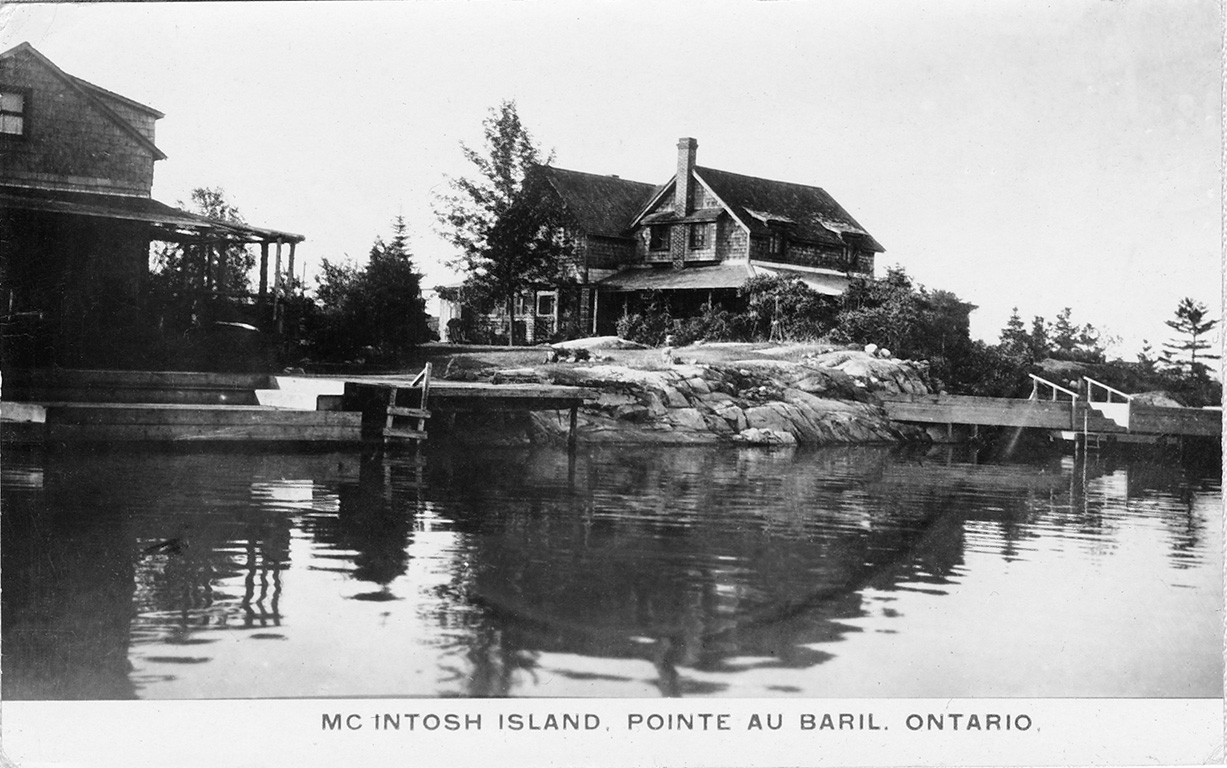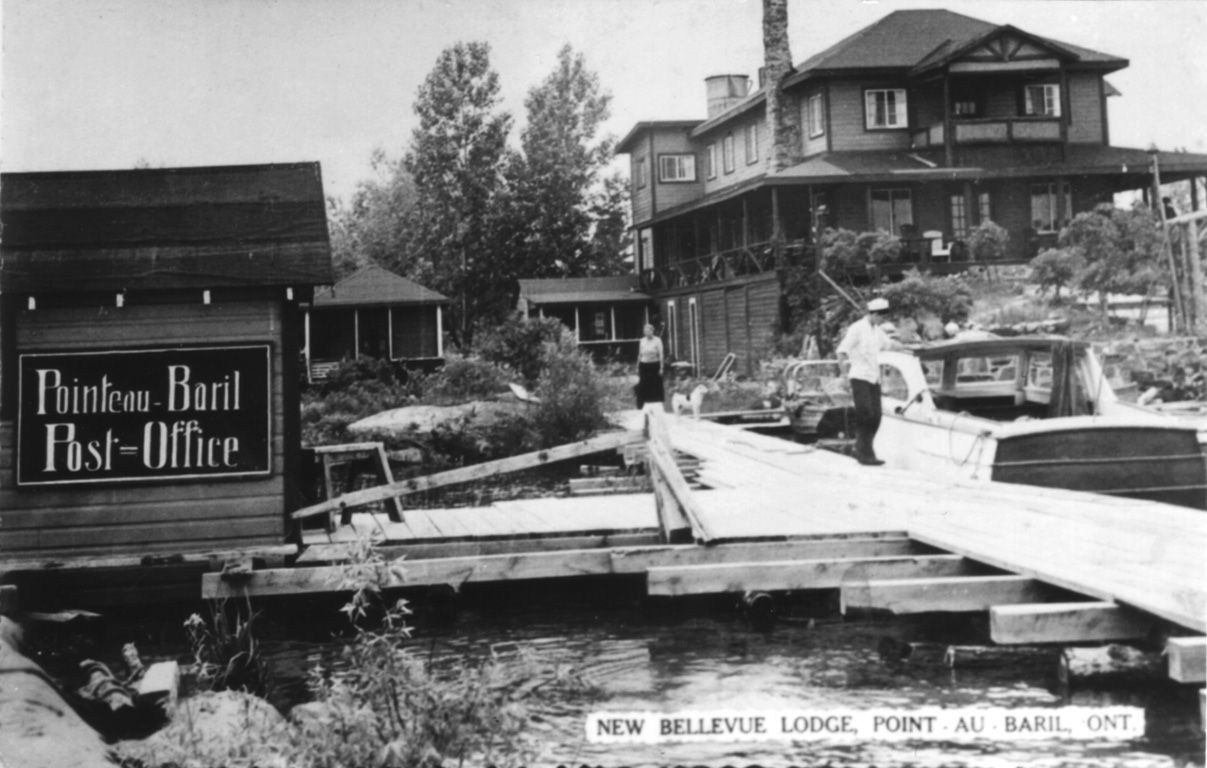~
THE GROUP OF BUILDINGS NEAR THE LIGHTHOUSE WAS THE FIRST CENTRE OF THE SUMMER COMMUNITY.
In the beginning,there was a light. Originally, it was simply a navigation lantern, hung from the branch of a tree on the headland to guide fishermen safely to port after sunset. Later, it was a wooden whisky keg, lost from a fur trader’s canoe during an autumn storm, that was hoisted on a pole. A slat from the barrel was removed, so the lantern within was visible only from one angle. If a fisherman returning from the open water could see the lantern’s light, he was making the correct approach through the treacherous bank of shoals that lay off the headland. The barrel became a landmark, giving Pointe au Baril its name – a French name because the first Europeans to come to this area were the fur-trading voyageurs. In 1889, the lighthouse was built to guide the commercial fishermen and growing steamer traffic servicing the French River lumber mills. The first lighthouse keeper was Samuel E. Oldfield of Parry Sound, Ontario. Oldfield, who also became Pointe au Baril’s first postmaster, manned the lighthouse until 1907.
The first centre of the summer community of Pointe au Baril was the “Village,” a cluster of buildings.
At the hub of the Village were the commercial fishing operation run by Harry Oldfield.
General store of John McIntosh sometimes known as the Mayor of Pointe au Baril and a friend of Hamilton Davis.
In the early 1880s, the McIntosh family of Meaford, Ontario, settled on Pointe au Baril for their summer fishing operations. A house was constructed on a protected site just inside Lookout Island to shelter the men employed on their fleet of 20-foot Mackinaw sailing skiffs. In 1894, John McIntosh moved the fishing operation across the main channel next to the lighthouse and opened a general store. What was his fishing camp became a summer residence for his family. After a few busy summers entertaining guests, John’s sisters saw an opportunity and opened the McIntosh boarding house. At about the same time – reportedly using boards salvaged from a wrecked lumber boat – the Oldfield family built the Bellevue Hotel across the channel from the lighthouse.
This little group of buildings became known as the “Village” – the first centre of the Pointe au Baril summer community. It was described by Professor R. K. Gordon, a Bayfield cottager, in 1907: “A few cottages, a little wooden Anglican church and the Bellevue Hotel were scattered round on different islands. The hotel, a square wooden box, the colour of slightly stale mustard, had been built to meet the needs of a few fishing enthusiasts who came up summer after summer to catch black bass. In the evening, they sat on the veranda, smoked cigars and told each other lies about the four- or five-pound bass they had hooked but had not landed.”
In the early years of the 20th century, the Village was Pointe au Baril, and most of the new cottages were built within rowing distance of its amenities. Milk, ice, mail, messages, supplies – all were available out at the Pointe. When the Ojibway Hotel was built in 1906 and when, in 1908, the railroad from Parry Sound reached what would come to be known as the Station, the centre of gravity of the summer community began to shift. The little cluster of buildings out near the Pointe would gradually play a less prominent role in holiday life.
Though the original Pointe au Baril Village disappeared as commercial fishing declined in the area and the summer community grew far beyond the Oldfields’ Bellevue Hotel and the McIntoshes’ general store, the centre of the Village – the lighthouse – remained the most widely recognized landmark of the area. And it continued to do what it had always done since the day somebody hung a kerosene lantern on the branch of a tree. Over the years, its keepers – Sam Oldfield, Charles McDevitt, Ole Hansen, James Vail, Kenneth Evans, Carl and Emmaline Madigan – maintained the light that brought boats safely home to port.








